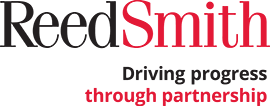1. A prominent friction point continues to be the narrow construction of NAV borrowing purposes embedded in the Institutional Limited Partners Association’s (ILPA) 2023 guidance. Because the ILPA paper centers on facilities used to pre-fund distributions, some limited partners (LPs) have imposed blanket prohibitions on NAV facilities in side letters without distinguishing between distribution-bridge trades and financings that facilitate value-accretive follow-on investments, opportunistic acquisitions, currency hedging or portfolio-level working capital. General partners (GPs) report that this blunt-instrument drafting obscures the nuanced risk/benefit profile of the product and stifles meaningful dialog around portfolio management tools that could ultimately enhance returns and mitigate downside volatility.
2. The panel agreed that reticence among certain investor constituencies is not dissimilar to the apprehension that greeted the emergence of capital-call facilities two decades ago and the subsequent development of a robust secondary market. In each instance, the industry overcame resistance through education, alignment of interests and disciplined market practice; NAV financings are no different. As sponsors accumulate a verifiable track record of using NAV proceeds judiciously, investor unease should dissipate and yield more balanced LPA drafting, clearer disclosure requirements and, ultimately, cost-efficient execution for borrowers.
3. We continue to observe pronounced regional variation. European funds, often employing European-style holding company (holdco) structures, are architecturally predisposed to portfolio-level leverage and can deliver clean, enforceable security to lenders. U.S. funds, by contrast, may not always have in place an intermediate umbrella holdco structure that allows for the injection of NAV debt. Sponsors active on both sides of the Atlantic should therefore resist a one-size-fits-all mindset and tailor facility documentation to the governing jurisdiction, tax posture and investor base of each fund vehicle.
4. The lender universe is broadening. Credit funds and insurers now routinely partner with relationship banks to deliver blended unitranche or bifurcated senior/subordinated solutions, thereby matching long-dated, low-risk liabilities to investment-grade portfolio exposure, while carving out higher-yielding tranches for non-bank participants. Borrowers should anticipate that such clubbed structures will import disparate regulatory capital constraints and reporting obligations, demanding careful coordination of intercreditor rights, release mechanics and voting thresholds across the capital stack.
5. Valuation remains the linchpin of every NAV transaction. While audited sponsor marks provide the baseline, facility agreements now almost universally incorporate “challenge” features that allow lenders to adjust advance rates, tighten covenants or impose cash-trap regimes should asset values drift outside an agreed tolerance band. From a drafting perspective, fund counsel must ensure that the partnership agreement contains sufficiently granular – and consistently applied – methodologies, both to withstand lender diligence and to avoid the scenario in which a GP could pivot to a non-market metric that artificially inflates collateral value without triggering a covenant breach.
6. The sixth takeaway flows directly from the fifth: an influx of first-time NAV lenders, some without in-house portfolio valuation expertise, heightens the risk that internal credit processes lag behind origination velocity. Sponsors would be well served to insist on objective and transparent valuation principles in the limited partnership agreement precisely because such clarity can expedite lender credit approval, reduce protracted lender diligence and potentially compress pricing.
7. Macroeconomic dislocation – especially the rate-driven slowdown in U.S. M&A – has altered the way NAV facilities are deployed. With exit timelines extended, sponsors are employing NAV borrowings as a defensive liquidity tool rather than a distribution bridge. Lenders, in turn, are underwriting to lower loan-to-value ratios, seeking diversified collateral pools and imposing heightened scrutiny on portfolios with binary risk characteristics (for example, concentrated commodity exposure or impending regulatory inflection points). As a practical matter, sponsors should expect more granular information covenants and longer lead times for deal execution as credit committees reassess sectoral risk.
8. Rating agencies are beginning to play an outsized role, particularly where non-bank lenders look to syndicate risk or attract insurance company participation. An investment-grade rating can dispel LP concerns regarding structural subordination, validate pricing and foster greater acceptance of the product. Borrowers contemplating a multi-lender syndicate or term loan B take-out should evaluate early in the process whether the incremental disclosure burden associated with a rating is outweighed by the potential reduction in coupon and faster distribution timeline.
9. Cross-collateralization has generated headline anxiety among LPs, yet in practice, the risk of a “whole-portfolio seizure” is remote. Facilities are commonly structured with covenants that require equity cures, dividend traps and negotiated grace periods well before an event of default. Where the GP’s stewardship is genuinely called into question, lenders and LPs are usually aligned in seeking an orderly transition to a replacement manager who can maximize asset value.
10. Finally, banks appraise NAV opportunities by considering factors such as portfolio diversity, loan-to-value ratio and asset quality. Highly concentrated or early-stage venture portfolios will invariably push leverage appetite downwards and pricing upwards. Sponsors can create tangible value by mapping each asset into empirically determined risk buckets, quantifying concentration thresholds and lining up any necessary governance consents at the fund and portfolio-company level before soliciting term sheets. Doing so accelerates credit approval, reduces documentation friction and materially improves economic terms.
In closing, NAV facilities represent a logical next step in the evolution of fund-level leverage and, when drafted and deployed judiciously, can provide sponsors with a flexible, cost-efficient tool to navigate turbulent markets, execute follow-on investments and optimize capital allocation. By embracing clear valuation regimes, fostering transparent LP communication and tailoring covenants appropriately to the fund structures, market participants can unlock the full potential of NAV financings while safeguarding stakeholder interests.
We stand ready to assist sponsors, investors and lenders as they negotiate the complexities of this dynamic asset class. Please contact any member of Reed Smith’s global fund finance team should you wish to discuss these issues further.

